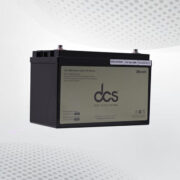
In the realm of digital content creation, real-time 3D animation has emerged as a transformative technology, pushing the boundaries of what is possible in visual storytelling, gaming, virtual reality (VR), augmented reality (AR), and beyond. This cutting-edge technology allows for dynamic, interactive, and immersive experiences that captivate audiences like never before.
Understanding Real-Time 3D Animation
Real-time 3D animation refers to the process of generating computer-generated imagery (CGI) and animations in real-time, as opposed to traditional methods where rendering and playback were separate processes. This capability is made possible by powerful graphics processing units (GPUs) and advanced software that can render complex scenes instantly, responding to user inputs or environmental changes without delay.
Evolution and Applications
Evolution of Technology
The evolution of real-time 3D animation has been driven by significant advancements in hardware and software. Traditionally, rendering high-quality 3D animations required substantial computing power and time-consuming processes. However, with the advent of GPUs designed for parallel processing and real-time rendering engines such as Unreal Engine and Unity, creators can now achieve stunning visual fidelity and interactivity in real-time.
Applications Across Industries
Real-time 3D animation has found applications across various industries:
- Entertainment and Gaming: In the gaming industry, real-time 3D animation allows for immersive gameplay experiences with lifelike characters and environments. It enables developers to create interactive worlds that react in real-time to player actions, enhancing engagement and realism.
- Film and Television: In filmmaking, real-time 3D animation is revolutionizing pre-visualization, virtual cinematography, and special effects. Directors and producers can visualize complex scenes, camera movements, and visual effects in real-time, streamlining the production process and reducing costs.
- Advertising and Marketing: Marketers utilize real-time 3D animation to create captivating advertisements, product visualizations, and interactive experiences. It allows brands to showcase products from every angle, customize content based on consumer interactions, and create memorable brand experiences.
- Education and Training: In education, real-time 3D animations are used for simulations, virtual laboratories, and interactive learning experiences. It provides students with hands-on training in realistic environments, enhancing comprehension and retention of complex subjects.
- Architecture and Design: Architects and designers use real-time 3D animation to visualize building designs, urban planning projects, and interior spaces. It enables stakeholders to explore virtual models, make real-time adjustments, and visualize the impact of design choices before construction begins.
Advantages of Real-Time 3D Animation
Interactivity and Engagement
One of the primary advantages of real-time 3D animation is its interactivity. Users can interact with virtual environments, manipulate objects, and influence outcomes in real-time, creating personalized experiences. This level of engagement is crucial in gaming, education, and interactive media where user immersion enhances the overall experience.
Efficiency and Cost-Effectiveness
Real-time 3D animation reduces production time and costs compared to traditional animation methods. Since rendering occurs in real-time, creators can iterate quickly, make adjustments on the fly, and preview results instantly. This efficiency is particularly beneficial in industries with tight deadlines and budget constraints.
Versatility and Scalability
Real-time 3D animation offers versatility and scalability across platforms and devices. Animations can be optimized for different screen sizes, resolutions, and performance requirements without sacrificing quality. This flexibility makes it suitable for applications ranging from mobile games to high-end virtual reality experiences.
The Role of 3D Animation Services
Collaboration and Expertise
3D animation service play a crucial role in the adoption and implementation of real-time 3D animation technology. These services provide expertise in 3D modeling, rigging, animation, and rendering, allowing businesses and content creators to leverage advanced tools and techniques without extensive in-house resources.
Customization and Innovation
By partnering with 3D animation services, companies gain access to customized solutions tailored to their specific needs and objectives. Whether developing interactive training simulations, immersive virtual tours, or cinematic-quality animations, 3D animation services offer creative insights and technical proficiency to bring ideas to life.
Integration and Support
3D animation services facilitate seamless integration of real-time 3D animations into existing workflows and technologies. They provide ongoing support, updates, and maintenance to ensure optimal performance and compatibility across different platforms and devices. This comprehensive approach allows businesses to stay ahead in a rapidly evolving digital landscape.
Future Trends and Innovations
Looking ahead, the future of real-time 3D animation promises continued innovation and growth:
- Enhanced Realism: Advances in graphics technology and rendering engines will enable even more realistic simulations and visual effects, blurring the lines between virtual and reality.
- AI and Machine Learning: Integration of AI and machine learning algorithms will enhance character animation, procedural content generation, and interactive storytelling in real-time 3D environments.
- Cross-Platform Compatibility: Improved cross-platform compatibility will make real-time 3D animations accessible across a wide range of devices, from smartphones to high-performance gaming consoles.
- AR and VR Experiences: Real-time 3D animation will play a crucial role in the development of augmented reality (AR) and virtual reality (VR) applications, transforming how users interact with digital content and immersive environments.
Conclusion
In conclusion, real-time 3D animation represents a paradigm shift in digital content creation, offering unprecedented levels of interactivity, realism, and efficiency across various industries. With the support of 3D animation services and ongoing technological advancements, the potential applications of real-time 3D animation are limitless. As this technology continues to evolve, it will undoubtedly shape the future of entertainment, education, marketing, and beyond, driving innovation and redefining the way we experience digital content.










